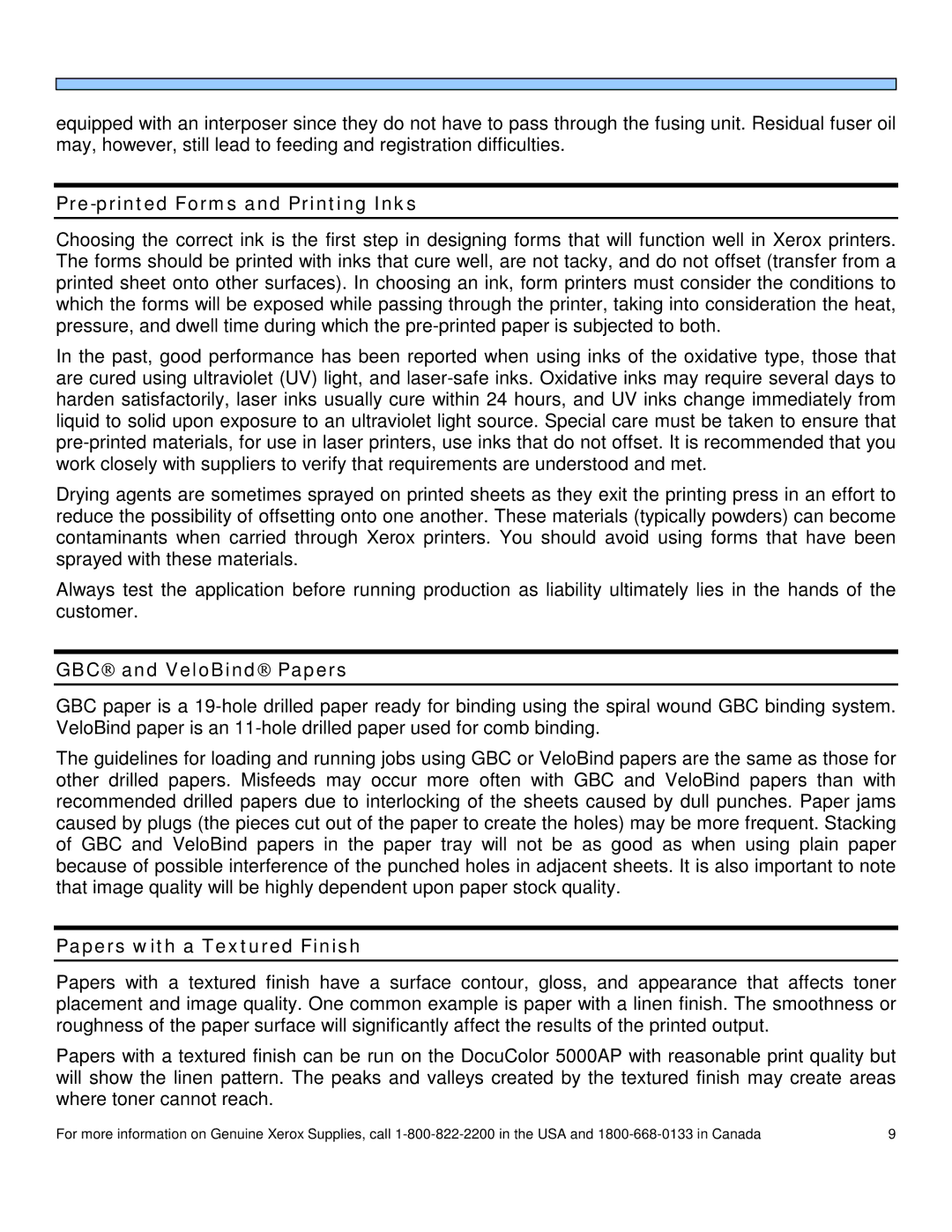
equipped with an interposer since they do not have to pass through the fusing unit. Residual fuser oil may, however, still lead to feeding and registration difficulties.
Pr e
Choosing the correct ink is the first step in designing forms that will function well in Xerox printers. The forms should be printed with inks that cure well, are not tacky, and do not offset (transfer from a printed sheet onto other surfaces). In choosing an ink, form printers must consider the conditions to which the forms will be exposed while passing through the printer, taking into consideration the heat, pressure, and dwell time during which the
In the past, good performance has been reported when using inks of the oxidative type, those that are cured using ultraviolet (UV) light, and
Drying agents are sometimes sprayed on printed sheets as they exit the printing press in an effort to reduce the possibility of offsetting onto one another. These materials (typically powders) can become contaminants when carried through Xerox printers. You should avoid using forms that have been sprayed with these materials.
Always test the application before running production as liability ultimately lies in the hands of the customer.
GB C a n d V e l o B i n d Pa p e r s
GBC paper is a
The guidelines for loading and running jobs using GBC or VeloBind papers are the same as those for other drilled papers. Misfeeds may occur more often with GBC and VeloBind papers than with recommended drilled papers due to interlocking of the sheets caused by dull punches. Paper jams caused by plugs (the pieces cut out of the paper to create the holes) may be more frequent. Stacking of GBC and VeloBind papers in the paper tray will not be as good as when using plain paper because of possible interference of the punched holes in adjacent sheets. It is also important to note that image quality will be highly dependent upon paper stock quality.
Pa p e r s w i t h a T e x t u r e d Fi n i s h
Papers with a textured finish have a surface contour, gloss, and appearance that affects toner placement and image quality. One common example is paper with a linen finish. The smoothness or roughness of the paper surface will significantly affect the results of the printed output.
Papers with a textured finish can be run on the DocuColor 5000AP with reasonable print quality but will show the linen pattern. The peaks and valleys created by the textured finish may create areas where toner cannot reach.
For more information on Genuine Xerox Supplies, call | 9 |
